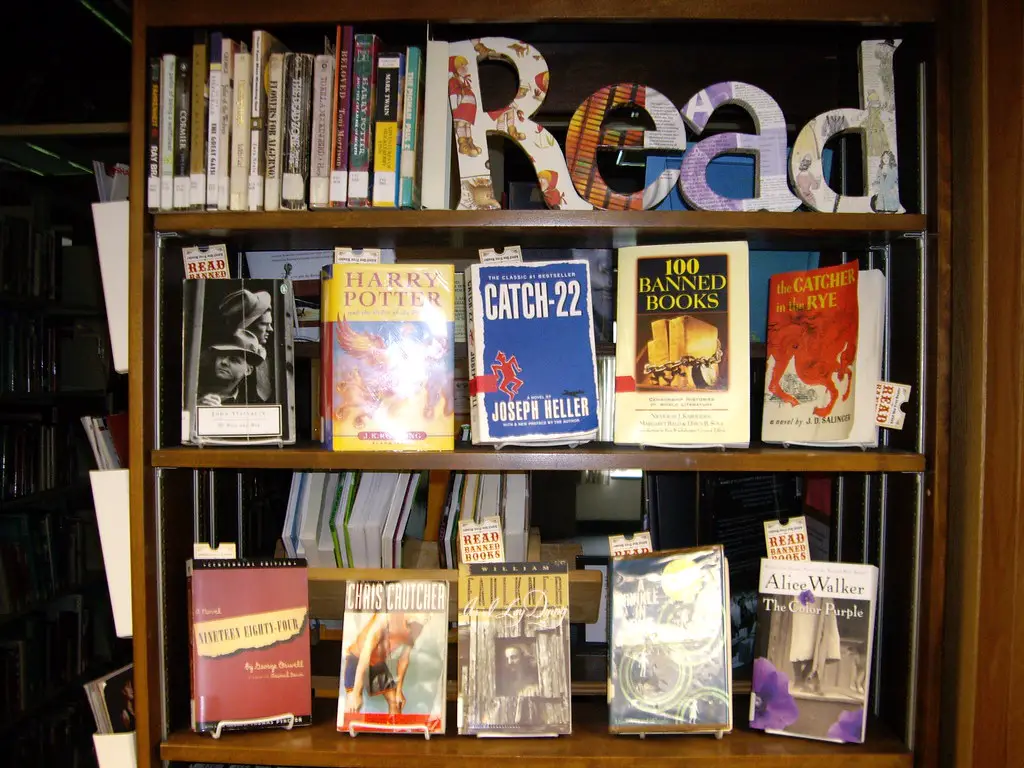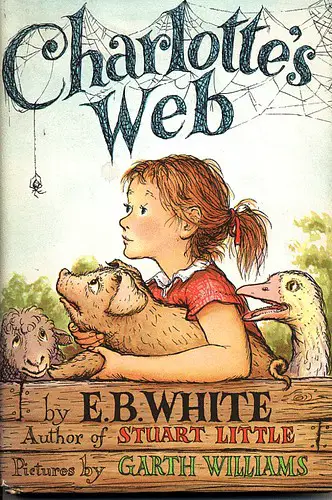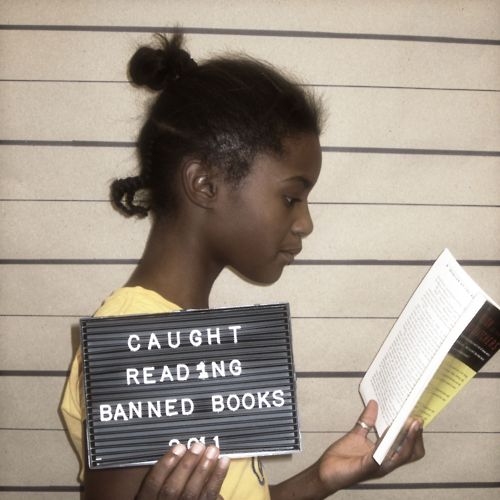Every September as school buses refuel and become a fixture on the roads again, retail stores have “back to school sales,” and routines become the norm for families with kids in school. Another annual ritual is gearing up. Libraries and bookstores begin promoting Banned Book Week, an annual awareness campaign promoted by the American Library Association (ALA) and Amnesty International that aims to celebrate the freedom to read, and at the same time, draw much-needed attention to the banned and challenged books that often represent marginalized populations of our society.
Banned Book Week’s Theme
This year’s theme is Books Unite Us, Censorship Divides Us. This year alone, more than 1,000 books have been banned in schools across the country. Most of the books in question cover race and LGBTQ themes. Book banning continues to be the most widespread form of censorship in the United States, with children’s literature being the primary target. Advocates mostly consisting of parents and school boards call for bans on books they fear that children will be swayed by. It is this fear alone, the power of books and stories that present ideas or raise questions, that parents, political groups, or religious organizations have a problem with.
According to ALA President Patty Wong, this year the list of challenged books is at the highest number since the American Library Association began tracking challenged books 20 years ago. “We support individual parents’ choices concerning their child’s reading and believe that parents should not have those choices dictated by others. Young people need to have access to a variety of books from which they can learn about different perspectives. So, despite this organized effort to ban books, libraries remain ready to do what we always have: make knowledge and ideas available so people are free to choose what to read.” And Bookstores remain ready to sell them.

Some independent bookstores have gone so far as to add Banned Book Sections in their stores to bring awareness to the First Amendment right. In my store, it was always interesting to see the shock and awe come over customers when they saw one of their favorite books on the banned book display. Most of them couldn’t understand why the book was included at all. “This is a classic!” was one of the more popular exclamations. We hear an awful lot about the second amendment regarding gun rights, but much less about the first amendment, which protects speech, religion, the press, assembly, and the right to petition the government.
Common Banned Books
The aim of Banned Books week is to encourage readers to “examine challenged literary works and to promote intellectual freedom in schools and bookstores, to teach the importance of our first amendment rights and the power of literature, and to draw attention to the danger that exists when restraints are imposed on the availability of information in a free society.”
The titles that often make the most challenged list:
- To Kill a Mockingbird, Harper Lee
- Captain Underpants, Dave Pilkey
- Gender Queer: A Memoir by Maia Kobabe
- The Handmaid’s Tale, by Margaret Atwood
- All Boys Aren’t Blue, George M. Johnson
- The Bluest Eye, Toni Morrison
- Grapes of Wrath, John Steinbeck
- Brave New World, Aldous Huxley
- Fahrenheit 451, Ray Bradbury
- Of Mice and Men, John Steinbeck
- I Know Why the Caged Bird Sings, Maya Angelou
- Lord of the Rings, JRR Tolkien
- Catcher in the Rye, J.D. Salinger
- Go Tell it on the Mountain, James Baldwin
Even my beloved Charlotte’s Web, by E.B. White, was listed in 2006 because “talking animals are blasphemous and unnatural.” Has anyone ever heard of the imagination? Childhood? Why are so many books being challenged? And how many steps away could a free society be from banning books to actually burning them?

Hitler held book burnings in Nazi Germany to eradicate any ideas that opposed Nazism. But they also included so many others it was “a campaign of cultural genocide.” After the book burnings, the Nazi regime raided bookstores, libraries, and publishers’ warehouses to take the books that were deemed “dangerous” to the Nazi message.
By removing books from circulation, you remove the content, the discussion, and the possibility of a conversation. If books are kept out of libraries, kids may never see them. Not all kids are free to shop in bookstores, nor are they able to buy books for themselves. It begs the question then too, “Why is a book about me bad?”
“In a land that treasures freedom and liberty, the people can’t afford to be afraid of any ideas, no matter how offensive they may seem. If they are, the worst ideas will be the ones that triumph,” ~ Bill Mego, the late freelance columnist for Naperville Sun.
Author, Salman Rushdie had a fatwa, or death threat, over his head after his book The Satanic Verses was published in 1988. The book was perceived as blasphemous and was banned from India in a blatant form of censorship. They didn’t want his book to exist, nor did they want Rushdie to exist either. He has been in and out of hiding for his life ever since. Only last month on Aug. 12 he was attacked at a book event in Upstate New York and sent to a hospital in Erie, PA, in critical condition. He survived the attack and is now recovering.
The Mission of Banned Book Week
Books are powerful. Banned Book Week’s mission is to draw national attention to the harms of censoring books in our cities, our towns, and our suburbs. According to Susan Weber, opponents of book bans “argue that by restricting information and discouraging freedom of thought, censors undermine one of the primary functions of education: teaching students how to think for themselves.”
Popular young adult author Lauri Halse Anderson told the New York Times, “By attacking these books, by attacking the authors, by attacking the subject matter, what they are doing is removing the possibility for conversation. You are laying the groundwork for increasing bullying, disrespect, violence, and attacks.”
Deborah Caldwell Stone, the Directory of the ALA Office of Intellectual Freedom, said, “If you focus on five passages, you’ve got obscenity. If you broaden your view and read the work as a whole, you’ve got Toni Morrison’s Beloved.”

I for one, think librarians and booksellers are the quiet heroes in this war against reading, and librarians and booksellers are there to support and advocate the books getting to the people who want to read them. This summer, a fireproof edition of Margaret Atwood’s 1985 novel, one of the 30 most banned books of the last decade, A Handmaid’s Tale, was auctioned off at Sotheby’s. Penguin Random House, the maker of this fireproof edition, said the version “is intended to serve as a powerful symbol against censorship and a reminder of the necessity of protecting vital stories.” The winning bid was $130,000, which will go to benefit PEN America, a human rights organization that fights to protect open expression and freedom in literature in the U.S. and abroad.
Book Banned Week will be held Sep. 18-24, and I encourage all readers to visit your libraries and bookstores and practice your freedom to read a book. It is still one of the most powerful ways to combat censorship in all its forms. Reading is meant to spark awareness and conversations, and if parents are really concerned about what their children are being exposed to, perhaps they need to widen their perspective and begin having an open dialogue with their children.
